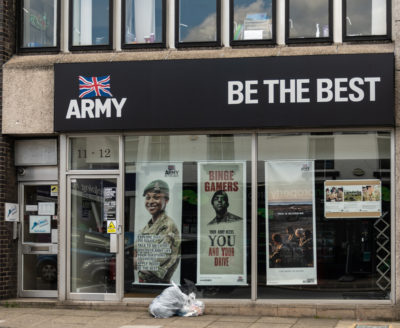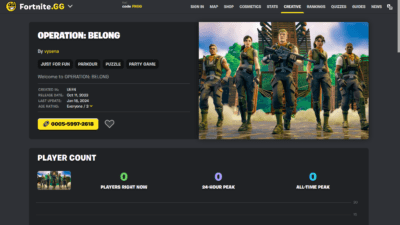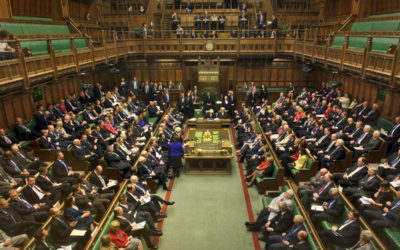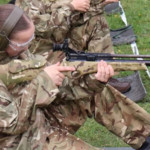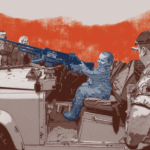The British Army frontline: women and children first
Open Democracy
Child Soldiers International: We now face the prospect of 16 year old girls joining the army in combat roles.
Shortly after announcing it would be reviewing the ban on women in combat roles, the Ministry of Defence last week published annual recruitment figures which revealed that 1,140 women joined the armed forces in the year to April 2014, accounting for 9.6 per cent of total intake. This marks a small increase on the previous year’s figures, when just 8.4 per cent of new recruits were female. Nevertheless, it is clear that the armed forces – and the Army in particular – remain overwhelmingly a young man’s game: last year, 17-year-old boys enlisting outnumbered women and girls of all ages combined.
Regardless of the numbers involved, it is right for the MoD continuously to review its personnel policies to ensure they are in line with anti-discrimination legislation and reflective of modern social norms. If combat roles are opened up to women, it will be one of the biggest developments in British armed forces personnel policy since 1999, when a European Court of Human Rights judgement forced the MoD to end its ban on gay servicemen and women.
Prior to the court’s ruling, the MoD had argued vehemently that allowing openly gay people to serve in the armed forces would have catastrophic effects on unit cohesion and operational effectiveness. Once the ban was lifted, these fears were demonstrated to be wholly unfounded. The Army and Navy now rank in the top 100 of the 2014 Stonewall Workplace Equality Index and the armed forces continue to operate as effectively as they ever did.
An equally seismic policy shift occurred a few years later when the MoD was forced to introduce a minimum age limit of 18 for soldiers entering hostilities (although it still insists on maintaining a loophole to allow it to deploy younger soldiers if it considers necessary). Once again the MoD fought reform for years, but had to concede defeat in 2003 when the UK ratified the UN Optional Protocol to the Convention on the Rights of the Child on the involvement of children in armed conflict. Yet again, the MoD’s fears of military disaster proved groundless. The idea of sending into battle a soldier who is too young to play Call of Duty is unthinkable – but barely a decade ago this was routine practice.
Despite grudgingly accepting that it can no longer send under-18s to man the frontline, the MoD still refuses to review the minimum enlistment age. It resists proposals to raise the enlistment age as passionately as it fought its previous battles over homosexuality and deployment age (using many of the same arguments). This obstinacy now leads to an interesting scenario – the possibility, in the near future, of 16-year-old girls being enlisted into some of the British Army’s most dangerous combat roles. Projecting figures which reflect the 2012/13 recruit intake (the latest year for which full role distribution figures are available), we could expect to see around 90 girls under the age of 18 joining the infantry (the Army’s largest combat branch) each year. That’s about 3% of infantry intake.
The British Army’s policy on enlistment age is already seen as an anomaly internationally – it is one of fewer than 20 in the world which officially enlist from 16. It is hard to predict the reaction of its military allies if it starts fielding a force in which a sizeable minority of its combat recruits are 16-year-old girls who, like the boys, will be sent to the frontline on their 18th birthday.
Arguing against lifting the ban on women in combat roles, Colonel Richard Kemp said “The essence of infantry soldiering is to close with the enemy and kill him face to face with bullets, bayonets and grenades… It is a dreadful, gut-churning, traumatic and incredibly tough job”. But in January 2011, when Colonel Kemp argued with me on the Today programme against proposals to raise the enlistment age, he expressed no such qualms in relation to the 1,050 minors who joined the dreadful, gut-churning, traumatic Infantry that year. For them, apparently, it was just “a good opportunity”. Responding to renewed criticisms of the enlistment age last Sunday, he also argued that enlisting 16-year-olds “boosts the quality and fighting effectiveness of the armed forces”, although he didn’t specify how.
Understandably, “dreadful” is not the word the Army uses in its “Junior Entry” recruitment brochures directed at under-18s and their parents. In fact, the words “kill”, “violence”, “trauma”, and “injury” do not appear a single time anywhere in the Junior Soldier information leaflet, which presents the Army Phase One training centre at Harrogate like a residential sixth-form college. Remarkably, neither does the word “war”. Not once.
The old guard will retort “But they don’t go into war until they’re 18!” as if an 18-year-old boy is more emotionally and psychologically resilient than a woman can ever be, simply by virtue of his penis. This would-be defence also draws a false distinction between the experience of life on operations (including, but not limited to, combat) and life in training. If somebody is recognised as too young to participate in war, they cannot logically be considered old enough to participate in all-immersive training for war. Infantry training, as Colonel Kemp is at pains to point out, involves learning how to kill people “face to face with bullets, bayonets and grenades”. It involves simulated warfare and prolonged, intense physical and psychological pressure, designed to make recruits crack. It is inherently dangerous in and of itself, as the deaths in training (including of three recruits aged under 18 in the past three years) will testify. If frontline life was inherently different to training, then the training would be useless. The whole purpose is for them to merge as seamlessly as possible, which makes a deployment age of 18 meaningless if the Army still trains from 16.
The MoD no doubt worries about the impact on public morale of female soldiers being killed. In contrast, it believes we can tolerate the 92 British fatalities in Afghanistan who were still legally children when they enlisted – no doubt seduced by the sports, adventure, and “games rooms” promised in the same teen recruitment brochure which fails to mention the word “death” a single time. And it thinks we can stomach the deaths in Afghanistan of the twelve British soldiers who were aged just 18 when they were killed. Perhaps the MoD comforts itself with the fact that adolescents have an underdeveloped perception of risk and mortality, and consequently hopes that their experience of war – including their own death or permanent injury – is less traumatic for them than it might be for adult women.
Of course, there’s a big question over whether 16-year-old girls would ever be able to pass the demanding physical tests required for entry into infantry combat roles. But the physical suitability of teenage boys for these roles is also highly questionable. Whilst the 690 boys aged under-18 who enlisted into the infantry in 2012/13 “passed” the physical entrance tests, in the long term they are – according to internal MoD documents – twice as likely as adult recruits to be medically discharged due to training injuries. MoD guidelines on training of young recruits explicitly state that under-18s “have lower bone strength and joint stability, making them more susceptible to acute and overuse injuries”. Essentially, the problem with training teen soldiers is that they have children’s bodies. This is brought home graphically by reports of medical staff working with military casualties who are forced to perform painful, repeated re-amputations on the youngest patients because their limbs keep growing through the scar tissue.
The idea of 16-year-old girls serving in the British Infantry sounds so ludicrous that most people dismiss it out of hand. But if the majority of public and MoD opinion now accepts the concept of women serving in combat roles, it is clear that the real problem with 16-year-old girls joining the infantry is not that they are girls, but that they are 16. And this should be equally true for 16-year-old boys.
From the Defence Select Committee to the UN Committee on the Rights of the Child, from children’s organisations to veterans’ groups, from the NUT to the EU Directorate-General for External Policies and the Bishops of the Church in Wales, the MoD is under constant pressure to raise the enlistment age to 18. A 2013 survey found that an overwhelming 70 per cent of respondents who expressed a view thought the enlistment age should be raised to 18. Yet despite all this the MoD still clings in growing isolation to its belief in the need to recruit minors. In July last year, and again this March, the Defence Select Committee challenged the MoD to present evidence justifying this policy. Nearly a year after the original request was made, the MoD has still not been able to produce a response.
There are undoubtedly great changes ahead for armed forces personnel policies, which we have every reason to believe will be implemented as successfully as those of the recent past. But if the MoD truly wants to modernise the armed forces for the 21st century, it needs to start by recognising that “Boy Soldiers” are as outdated as the Cavalry.
See more: equality, legislation & policy, recruitment age, Child Soldiers International

